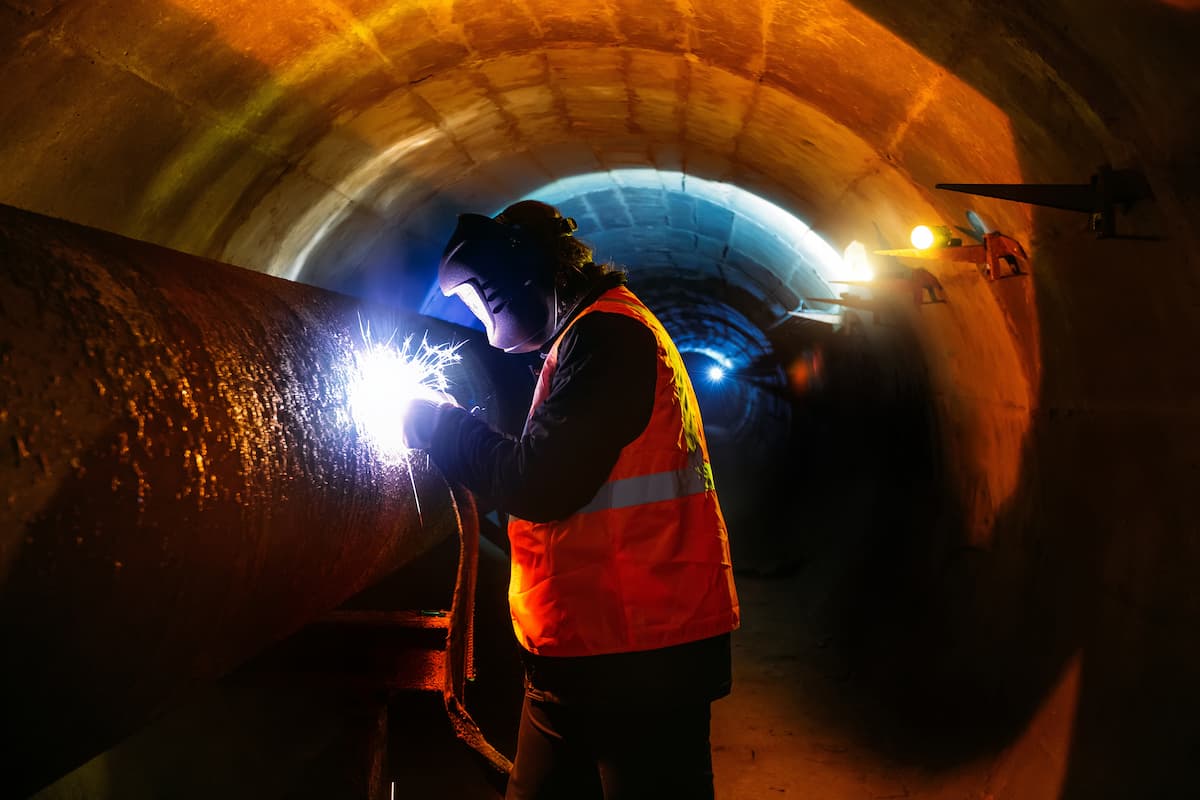Imagine being trapped in a small, cramped space with little to no oxygen, surrounded by toxic gases or high temperatures. That may sound terrifying to some, but it is the reality for many professionals that are required to work in confined spaces.
Many hazards make confined spaces dangerous, and some practical steps could prevent workplace injuries.
What is a Confined Space?
A confined space is an enclosed area with limited access and egress. This space is not meant for continuous human occupancy and can potentially contain hazardous materials or conditions. Examples of confined spaces include reaction vessels, septic tanks, sewage digesters, vats, boilers, silos, pumping/lift stations, holding tanks, utility vaults, ducts, pipelines, sewage distribution, or pits.

What Makes Confined Spaces So Dangerous to Work in?
Confined spaces are inherently dangerous due to the potential presence of various hazardous conditions. Here are some of the hazards that make confined spaces difficult:
- Lack of Oxygen: Confined spaces may not have enough oxygen to support life. This is particularly true of underground areas like sewers, tunnels, and utility vaults.
- Dust: Some confined spaces, such as grain silos or cement mixers, produce dust that can harm human health.
- Toxic Gases: Confined spaces can contain toxic gases, such as methane, carbon monoxide, or hydrogen sulfide. These gases can be lethal if not detected and removed promptly.
- High Temperature: Confined spaces can get extremely hot, primarily if they are located outdoors or close to a heat source. Heat exhaustion and dehydration are real risks for workers in these spaces.
- Access Restrictions: Confined spaces can have limited access points, which makes it difficult for workers to enter and exit. This can be particularly dangerous if an emergency arises.
What may Prevent Injuries When Working in Confined Spaces?
Here are some of the measures that may help to prevent injuries when working in confined spaces:
- Wear PPE: Personal Protective Equipment (PPE) such as helmets, gloves, and respirators can provide a barrier between the worker and the hazardous conditions in the confined space.
- Cover Your Body: Wear protective clothing that covers your entire body to avoid contact with hazardous materials or conditions.
- Test the Air: Always test the air quality in the confined space before entering. Use gas detectors to check for toxic gases or lack of oxygen.
- Adhere to All the Rules Regarding Working in a Confined Space: Follow all the rules and regulations regarding working in confined spaces. This includes having a permit to work in the area and maintaining contact with people outside the confined space so that they can provide escape assistance if needed.
Have You Been Injured Working on the Job
Whether you’re a construction worker crawling through a tight duct or a sewer maintenance worker inspecting a septic tank, following some safety measures may reduce the risk of workplace injuries.
However, as we’ve discussed, accidents can still happen, and if they do, it’s essential to know that you have the right to seek compensation for your injuries. The process can be complex, but you don’t have to go through it alone—the attorneys at the Law Office of James. M. Hoffman are here to help.
From drafting your claim to negotiating with insurance companies, we’ll be with you every step of the way to ensure you get the compensation you deserve. Please don’t wait until it’s too late. Contact us today to schedule a consultation and get started on your claim.
